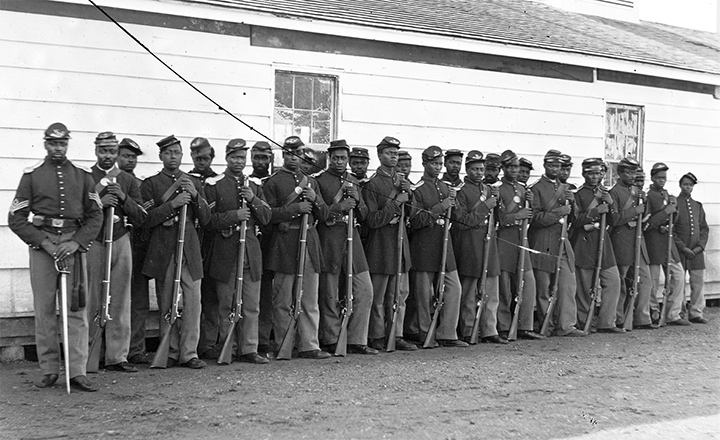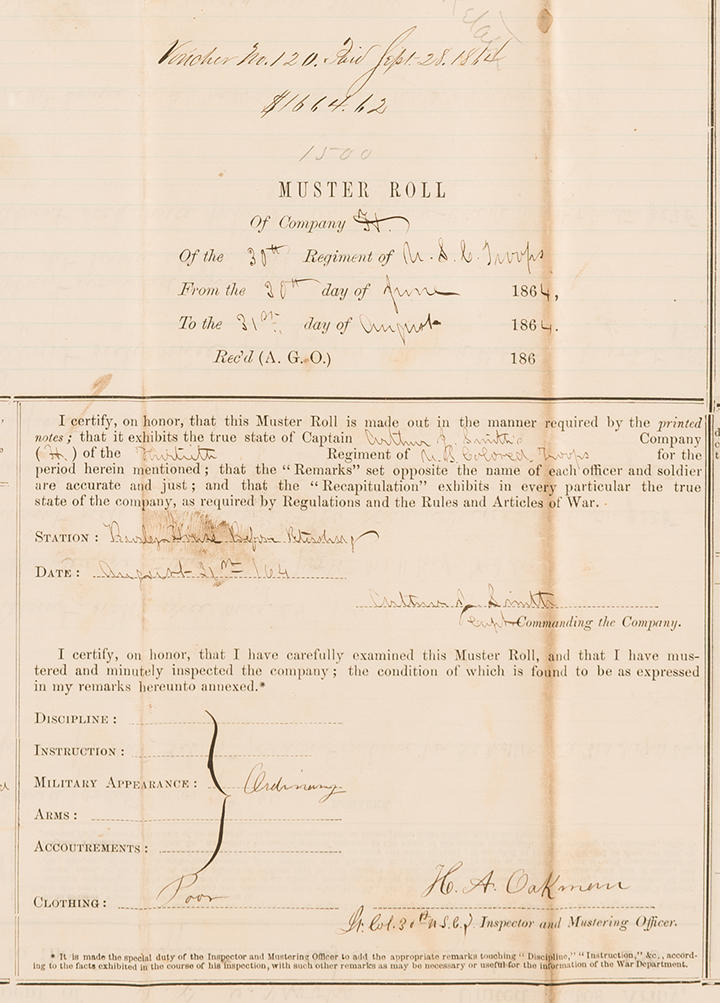Among the VMHC's collections is a rare set of eleven muster rolls for the 30th U.S. Colored Troops (USCT) while camped at Petersburg, Virginia, from June 30 to August 31, 1864. Organized at Camp Stanton in Benedict, Maryland, in February 1864, the 30th USCT served in spring campaigns in Virginia and marched with the Army of the Potomac into the Wilderness, where the regiment distinguished itself during one of the bloodiest engagements of the Civil War.
Although nearly half of the war’s battles were fought in and around the Petersburg-Richmond area, the organized push to capture Petersburg came in the late spring and early summer of 1864. The early June attempt to capture the city failed, resulting in a stalemate that evolved into trench warfare.


